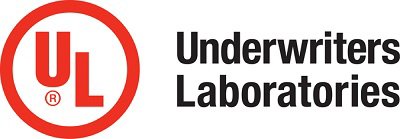
Central stations need to prepare for major infrastructure upgrading. Alarm technology has focused on new service delivery, but little thought has gone into the issue of how to secure the products or to deliver reliable service.
Recent events highlight another important change ? the need to secure the business from the impact from cybersecurity. The new UL regulations are going to significantly improve quality before the industry suffers major failures.
Improvements to communications, networks, and security standards will raise consumer confidence and build the industry reputation. Welcome in the new UL827 standard for central station software and operating sites.
History
UL has played a unique role in the alarm industry as both an ANSI accredited Standards Development Organization and as a testing service organization for central stations. Since 1924, UL827 and predecessor standards have set facility safety standards. In 1994 a separate automation standard resulted in UL1981. With new technologies impacting the industry, the need for updating was clear. A committee was formed in 2008 to review the UL1981 Standard.
Understanding the standards
The outcome of the work begun in 2008 set important new requirements for both UL827 and UL1981. The standards require the central station to: (a) define policy; (b) create procedure; (c) document compliance.
For UL1981, the software provider is mandated to document how testing could be done, but definitions will still need to be implemented by the central station. In the past, UL created the tests for compliance, but under the new standard, UL will review for compliance. UL is no longer the ?enforcer,? but has a new role in Quality Assurance.
The most daunting task for central stations is writing policies and procedures. Many subjects requiring definition have been outlined in Appendix B to both UL1981 and UL827 ? Operational Tests.
Unfortunately, the list is far from comprehensive, so every station will have to review the documents.
There are three effective dates. The most significant provisions were effective with issue of the standards in October, 2014. There are sections of UL1981 that have an effective date of April 29, 2016 (18 months after the initial effective date). Sections in UL827 have an effective date of October 29, 2016 (24 months after issue). The comments below ignore the effective date.
With the release of the 8th Edition of the Standard for Central-Station Alarm Services, UL 827 marks a
significant step in supporting operators of central station alarm service providers and those with an
interest in monitored alarm services.
With nearly 100 years of certification expertise, UL is a trusted leader in the assessment of central station facilities and services. The key ANSI standard for guiding this work is UL 827. The release of the 8th Edition of the standard for central station alarm services delivers a significant update and emphasizes the collaborative standards development process that is a cornerstone of the ANSI system.
The process started with the UL Standards Technical Panel (STP) for Alarm Services
chartering an industry task group to make a detailed revision proposal. The task group was comprised of a range of central station operators, developers of automation system software, manufacturers of equipment used by central stations, and UL staff.
Key goals of the task group:
- Move the installation requirements for automation systems into UL 827
- Increase options for the physical security of the stations
- Address the distribution of central station facilities
- Clarify protection of cabling used to serve the central station
- Explain actions taken for monitoring systems
- Spell out actions taken for disruption of communication paths
- Add requirements aimed at increasing the resiliency of central station service through high availability networking techniques and basic network
security measures - Introduce the optional use of temporary operating centers
Over a period of many months, the industry task group met regularly to identify proposals, craft language and rational for requirements and review the work. The draft of the revised standard was presented to the STP and posted in the Collaborative Standards Development System for review, comments and vote. The Standard was published on April 2, 2015.
Source: industries.ul.com
